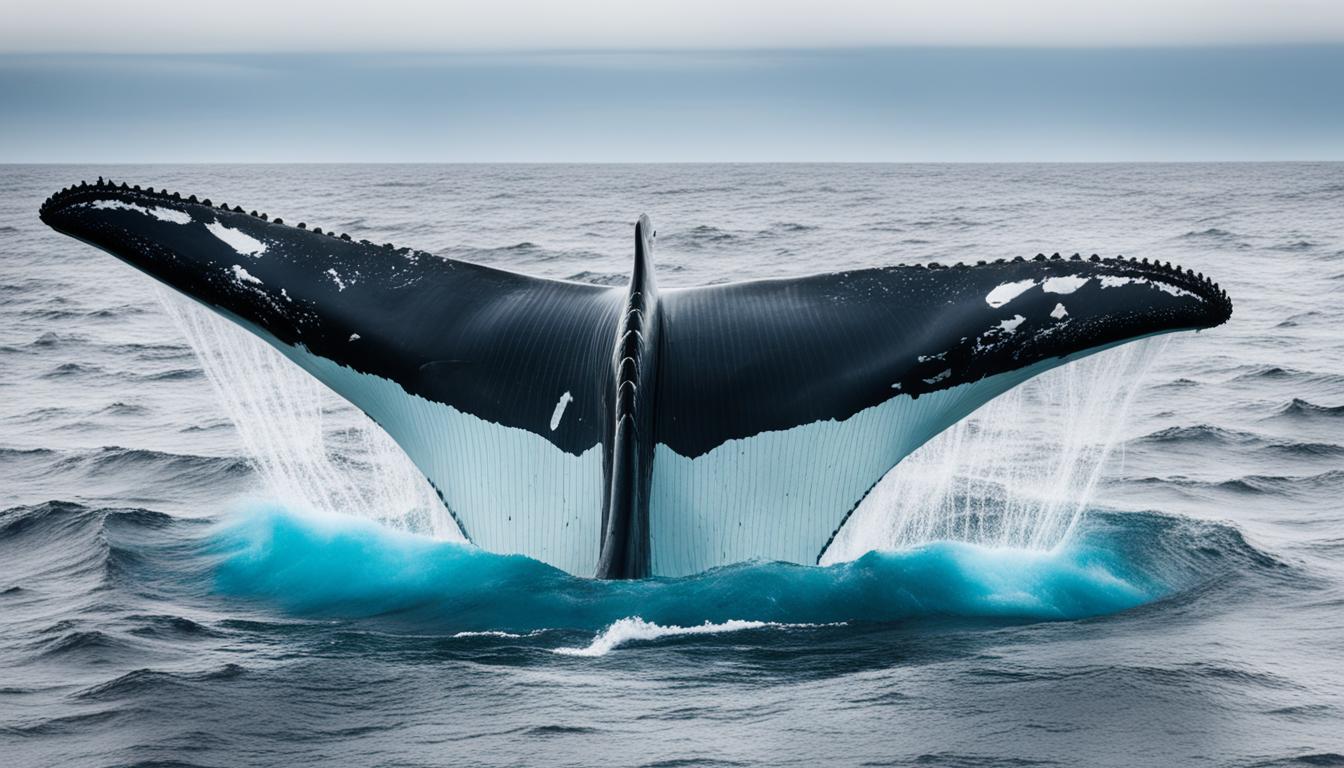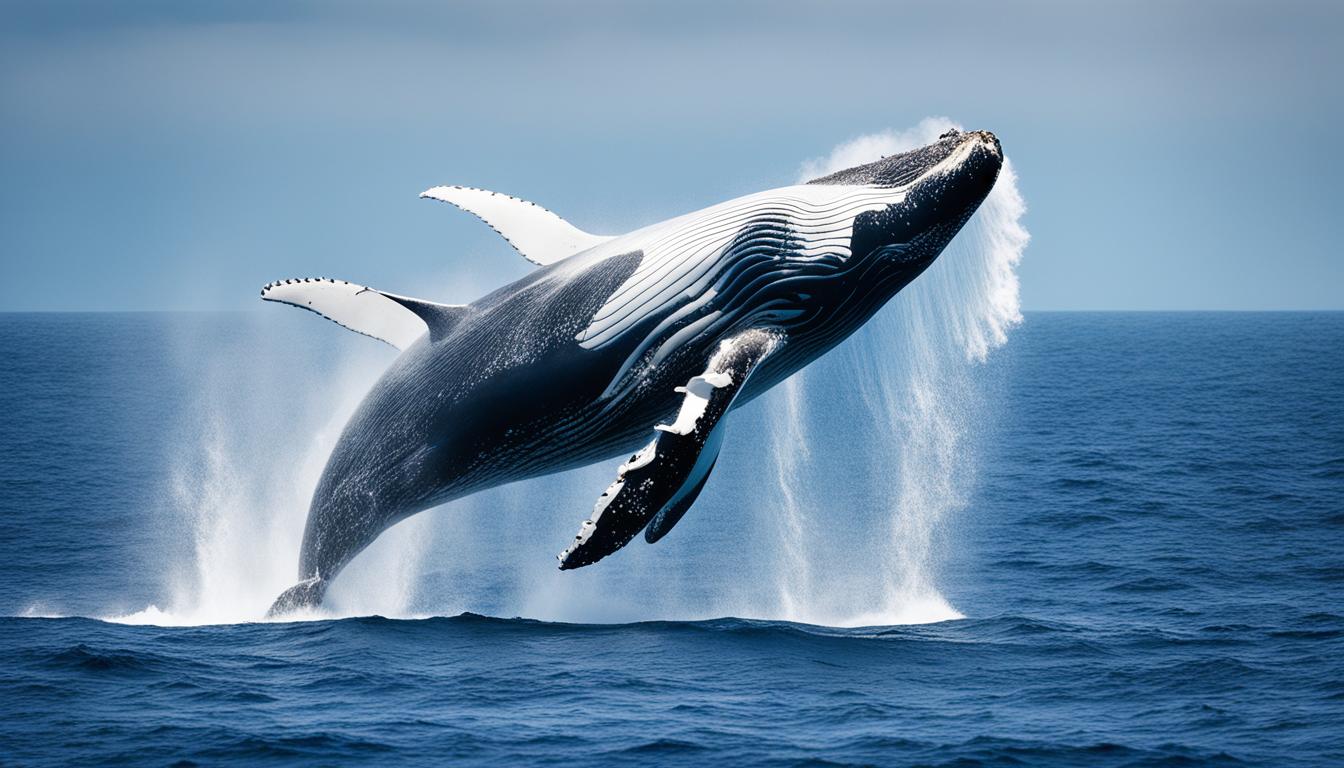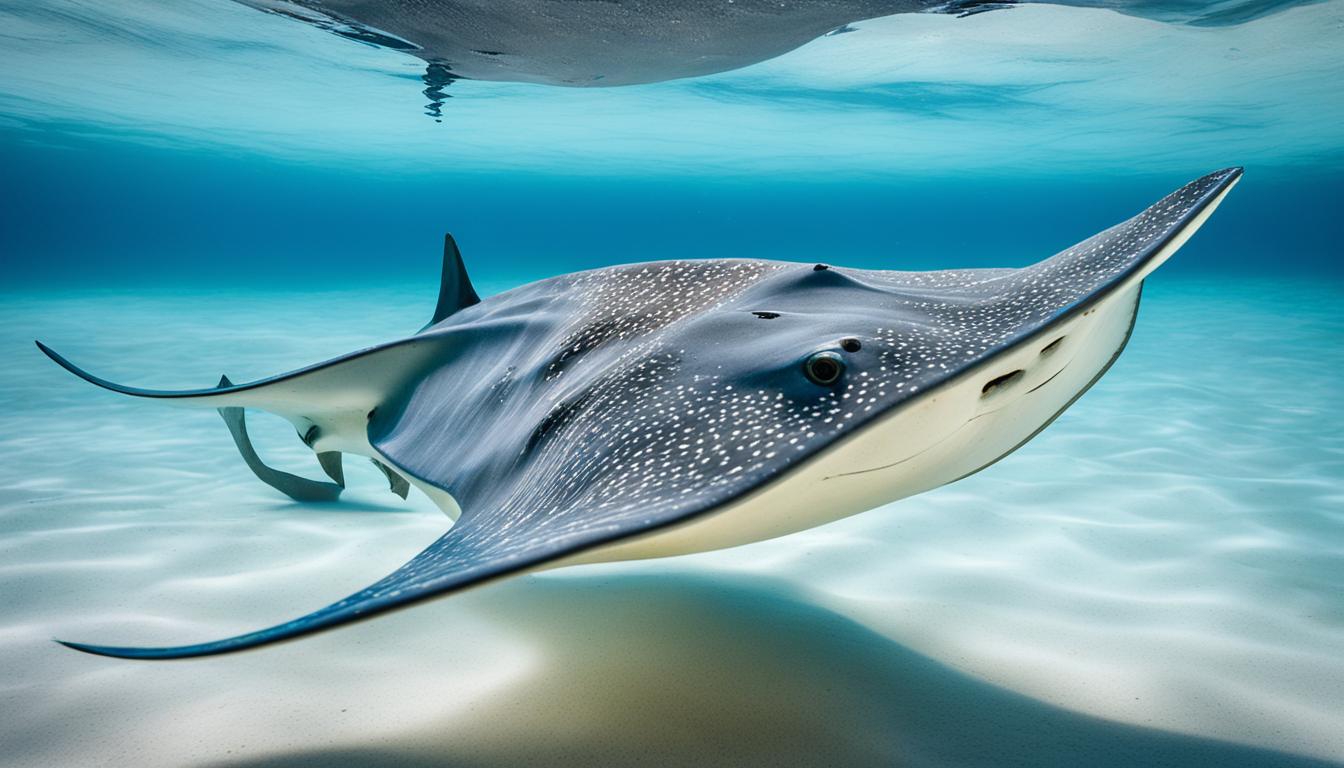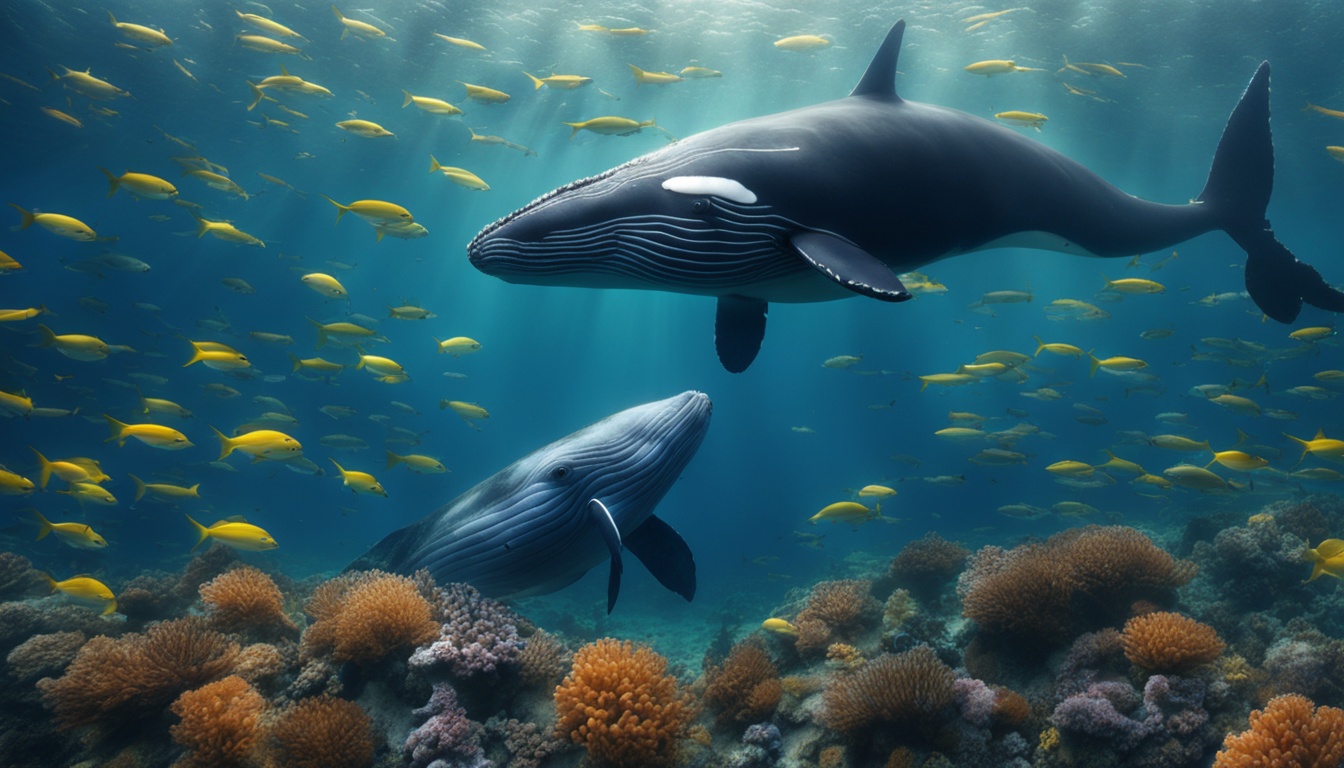Whales are the giants of the ocean, crucial for the health of marine life. But what dangers do they face that threaten their survival? Historic whaling and today’s issues like pollution and climate change pose big risks. It’s important to know these threats to save whales and protect our oceans.
The Importance of Whale Conservation
Whale conservation is key to keeping the marine ecosystem healthy. These amazing creatures are not just a wonder to us. They also play a big role in keeping the ocean’s life in balance. By controlling the numbers of their prey, whales help keep many marine species diverse.
Many people don’t know how whale conservation helps with biodiversity. Whales help move nutrients around the ocean. This supports the growth of important organisms like phytoplankton. These tiny plants make a lot of the world’s oxygen and take in carbon dioxide. This shows how connected marine life is.
Working to save whales is not just about helping one species. It helps the whole marine ecosystem. A healthy whale population makes ocean habitats more resilient. This helps many other marine creatures survive. We need to spread the word about why whale conservation is important. Your actions can help keep the ocean’s life rich and support human health too.
| Benefit of Whales | Impact on the Ecosystem |
|---|---|
| Nutrient Cycling | Enhances plant growth, supports food web |
| Regulation of Prey Populations | Prevents overpopulation, maintains species diversity |
| Carbon Sequestration | Helps combat climate change |
| Promotion of Marine Biodiversity | Supports a variety of marine organisms |
What Threats Do Whales Face?
Whales face many dangers that affect their survival. Looking back, we see how past actions hurt them. Today, they still face many dangers in our world.
Historical Perspective on Whaling
Historical whaling had a big impact on whales. People hunted them for oil and meat, greatly reducing their numbers. For example, the North Atlantic right whale was almost wiped out by hunting.
Now, whales are still struggling because of this history. The impact of whaling on whale populations teaches us the need for protection. We must learn from the past to help them.
Current Threats and Challenges
Whales now face many dangers, not just from the past. These threats include:
- Entanglement in fishing gear
- Ship strikes
- Habitat degradation
- Changing marine environments influenced by climate change
- Marine pollution from plastics and toxic chemicals
These dangers are causing whale populations to decline. We need to work together to protect their homes. This will help whales and other sea creatures.
| Threat | Description | Impact on Whales |
|---|---|---|
| Ship Strikes | Collisions between ships and whales | Injuries and fatalities |
| Marine Pollution | Introduction of chemicals and plastics into oceans | Health risks and habitat degradation |
| Entanglement | Whales becoming caught in fishing gear | Injuries, inability to feed or breed |
| Habitat Degradation | Destruction of critical whale habitats | Loss of breeding and feeding areas |
Marine Pollution and Its Impact on Whale Health
Marine pollution is a big problem for whales. It harms their health in many ways. Plastic in the oceans is a major concern.
Many whales think plastic is food, which is very dangerous for them. This can lead to serious health problems and even death.
The Dangers of Plastic Debris
Plastic is a big threat to whales. When whales eat plastic, it can hurt their insides and make them malnourished. This can be deadly.
Studies show that whales often have a lot of plastic in their bodies. To help whales, we need to reduce plastic waste and recycle more.
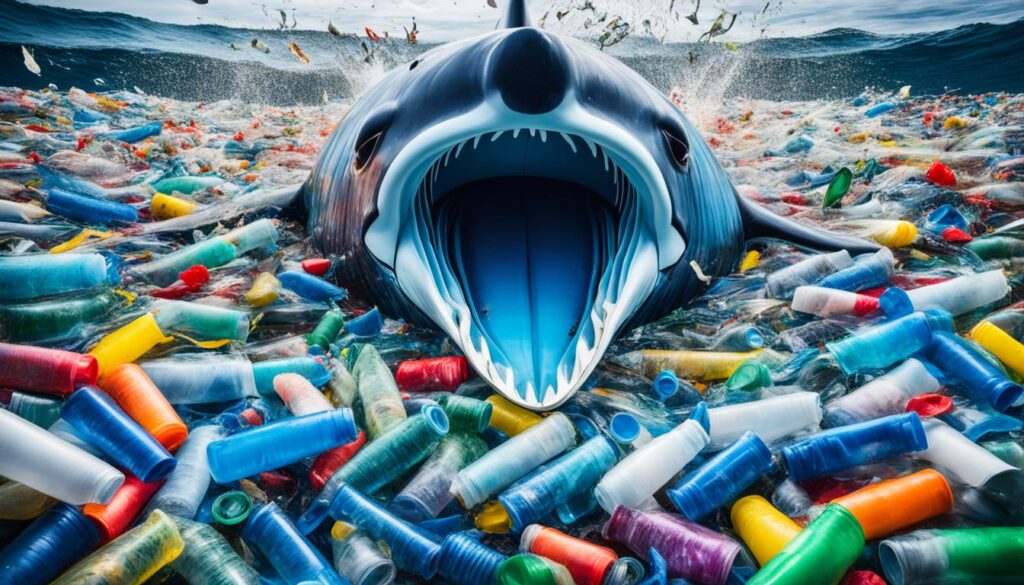
Toxic Contamination from Human Activities
Humans also pollute the ocean with toxic substances. This comes from things like industrial runoff and farm chemicals. These toxins can build up in whales over time.
This can cause health problems like reproductive issues and weak immune systems. We need to work on reducing these chemical threats to protect whales and the ocean.
Climate Change Effects on Whales
The planet is seeing big changes in climate, and marine ecosystems are feeling the impact. These changes are affecting whale populations a lot. We need to understand these effects to help protect whales.
Changes in Sea Temperature and Habitat
Climate change is making ocean temperatures go up and changing whale habitats. Whales need certain places to live and find food, but these places are changing. This is happening because polar ice is melting and the sea is getting warmer.
This makes life hard for whales. They can’t live in their usual places anymore. They have to adapt to new conditions, which is hard for them.
Impact on Food Sources
Climate change is also affecting what whales eat. Krill and fish, which are important food for whales, are disappearing because of warmer waters. This means whales don’t have enough to eat, which is bad for their health and how many babies they have.
Whales need a healthy ocean with lots of food to survive. We need to understand how climate change is changing their food supply. This will help us find ways to protect these amazing creatures.
Overfishing Impact on Whales
Overfishing harms whale populations by depleting the ocean’s resources. Whales rely on fish and krill for food, but fishing industries take too much. This leaves whales without enough to eat, threatening their survival and the ocean’s health.
Depletion of Whale Prey
Whales are fighting for food as fishing grows. Commercial fishing takes more of their food, making it hard for whales to survive. This puts whales at risk of not getting enough to eat, threatening their existence.
Competing with Fishing Industries
Whales also face dangers from fishing gear. They can get caught and get hurt or die. We need to work together to make fishing safe for whales and the ocean.

